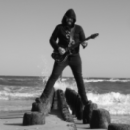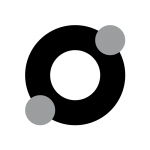Leaderboard
Popular Content
Showing content with the highest reputation since 03/24/2024 in Posts
-
TABLE OF CONTENTS MANY of the questions asked here are NOT covered in the manual. Yours is covered in the first couple of sections. We're happy to help with those questions that are not covered, but we're not going to re-type the manual for you to explain the absolute basics of use!3 points
-
For the tone & just overall 'amp' sound, the cab & mic are crucial, and wrapping your head around the different combinations of cab/mic isn't easy at all, given the vast number of mics, cabs, placement options, etc. So I always recommend The best IR in the world, really sounds great with pretty much any genre, simplifies a lot the entire tone-finding process. setting the Sag setting of the amp tends to make things tighter; less muddy. Always at 0 for me. Proper use of EQ For the impedance issue, if you don't have a pod go with the impedance issue then you don't have an impedance issue and adding buffer pedal shouldn't make a significant change. But that said; Which particular amp(s)? Not all models nor all amps are created equal. https://www.youtube.com/watch?v=Bz9tO4-kAG4 L6 really models the amps electronic components. And even 2 amps of the same brand/model can sound different, not to mention tubes... The blind tests I've seen of real gear vs L6 Helix/Go/etc., pretty much demonstrate that it's on par; really hard to differentiate. It's really all about your ability to tweak the tone. And not everybody likes the same amps/tones either. A lot of the amps you've mentioned are favorites in the lineup, and for me they're just plain meh.. Don't think it's particularly related to the amp/model, maybe more about your own playing style, your guitar, preferences, tweaking ability, tone-preference, etc., So as there's a ridiculous 100+ amps in the thing, just find a dozen amps that work for you, and forget about the rest. That would be my advice. But, it's definitely fun to explore amps and their history, and learning how people use them and how to make them work; plenty of tutorial videos and tweaking PGO tones, so I'd definitely start off with that too! Oh and don't be afraid to use the L6 amps either. Revisited them recently and they're pretty awesome. Definitely nothing wrong using them over 'real' amps; they're just that; improved versions or tweaks of existing amps; amps that could exist, or maybe couldn't due to electronic vs DSP, but honestly they sound great, I'd get rid of all Marshalls in PGO instead of them in a heartbeat! Not 'worse' in any way.3 points
-
Definitely not normal and you've covered the basic troubleshooting steps. Open a support ticket. If it's still in warranty or a known issue you may luck out.3 points
-
You don’t mention what Helix device you have, but here’s a quote from the Helix Rack manual. ”MIDI Bank/Program Changes Helix responds to traditional MIDI CC, and Program change messages from an exter- nal MIDI device (or from MIDI software via USB) and will recall setlists, presets, and/ or snapshots accordingly.” Consult the MIDI section of the manual for your device.3 points
-
Which Helix Native meter are you referring to... there are two which help in getting the gain staging accurate within the plugin. Adjust the level controls as needed to get the right values on the meters, don't just set them to 0 and hope for the best. I like to set my input level on Native around -18/-20... hard hits would push it to about -12. Set like this I find Native reacts similar to my LT with the same preset. Next, gain stage the plugin as you add/remove blocks) until the output meter is very similar. I'm not familiar with Main Stage so I don't know what your meter options are... but I can say that "Dbfs" will be very different from any "K metering" when referring to numbers only. I honestly don't care about getting a match in numbers here... I just make sure I'm not peaking anything. You are not mentioning what you use for an interface. If you have the option, set the input you use to "Instrument" or "High Impedance". That will load down your pickup in a more familiar way than LINE or a Mic Pre will.3 points
-
You need to assign the parameters to the Snapshot controller. Simultaneously push and rotate the associated encoder knob to do so. The parameter value will appear in brackets when properly assigned.3 points
-
Wow, lots of really good comments here. Thanks. Just following up. So it sounds like there may have been slight differences and it was ALL in my head..... however, the bottom line is I am very very happy with what I have now. I absolutely love it. Just for background if anyone is interested, I play mainly my tele and can go from very clean to dirty clean to crunchy to more hairy overdrive (not metal but more warm bluesy full overdriven state). I used to use the Zed amp as a base and then have 3 stomps (one to up the amp drive and adjust volume, the Minataur(sp?), and either the Temo or the Compul drive. with the latest update, I started using the Clarity as a starting point. It is really clean and has a ton of headroom and stays clean. I then use combinations of stacking the Prize Drive, the Teemah! and the Horizon Drive to get the different levels of overdrive I need. it is great! at least for me! I also use snapshots to switch between modulation effects: Chorus, Trem, 145 Rotary, Script Mod Phase, and no modulation. I have those 5 snaps assigned to one footswitch so I can roll through each of those and turn on the one I need. I also have a snapshot that I use for spacey sounds which turns on the chorus, delay, and another reverb. I used the command center to assign that to a foot switch that rotated between the spacy and the clean. Unchecking the snapshot option on the drives and amp lets me keep my tone the same no matter the other snapshots. I am sure there are improvements, but this works great for me now and gives me a ton of options. Clar PzTH DD C .hlx2 points
-
You realize that this is an 8-year-old thread and the person you're replying to hasn't been back in 7 years? I'm thinking their problem was solved, and they never got around to reporting back. FWIW - after they replaced some boards on mine 6 years ago, the digital I/O (AES and SPDIF) have worked fine. I see you're a new member so WELCOME and BEWARE of ZOMBIE THREADS! They'll eat your brain! ;-)2 points
-
The 8i6 has S/PDIF. Assuming that when you say Heilx you mean the FLOOR model, not the LT, this is how I do it with my 18i20. NOTE - the 18i20 uses different USB #s - 9/10 (7/8 on the 8i6); 11/12 (5/6 on the 8i6): With the 8i6 set as the ASIO Device in your DAW. Guitar>Helix>Helix FX (OD/MODS etc)>Path 1 Output Block=DIGITAL Helix SPDIF OUT>8i6 SPDIF INPUT DAW Track Input USB 7/8 (SPDIF)>Plugins>DAW Track Output 5/6 (SPDIF) 8i6 SPDIF Output>Helix SPDIF IN>Helix Path 2 Input=DIGITAL>Helix FX (Delay/Reverb etc)>Path 2 Output Block Helix MAIN Outs In Focusrite Control you want the SPDIF Outputs (not MUTED) set to "SOFTWARE (DAW) PLAYBACK 5/6". All other Inputs MUTED. Whichever 8i6 Outputs your speakers are connected to should be set to whichever 8i6 Inputs your Helix MAIN Outs are connected to. In my case I connect the Helix XLRs to the 18i20 Inputs 1/2 from where I can use Focusrite Control to route to the 8i6 Outputs 1/2 (Studio Monitors). 3/4 (Powercab), 5/6 (FRFR112). This configuration provides minimal latency as the signal chain is DIGITAL from Helix to Scarlett to DAW to Scarlett to Helix with the only AD/DA conversions at the Helix Input and Output - the path from the Helix Main Outs through the Scarlett to the speakers is analog. To RECORD the final Helix Output setup another track to take its INPUT from whichever 8i6 Inputs the Helix Main Outs are connected to - in my case Inputs 1/2. If you have an LT you can still do this, but unless you use the LT as your ASIO Device you'll be adding conversions.2 points
-
I don’t understand what you’re getting at. Perhaps it’s just terminology. Is ‘Sunset’ the name of a preset, an FX block, or something else? You talk about turning a preset on and off. That’s confusing. At all times there is exactly one preset that is active (don’t think of it as being ‘on’). The active preset is replaced by a different preset (not ‘turned off’) when you activate/select a different preset. You can turn FX blocks within a preset on and off. You don’t turn presets on and off; you activate/select them. There is always exactly one preset active at all times.2 points
-
Nice! Yeah one thing with Go is that you basically have to go through the manual... So many options, definitely won't be able to fiddle your way exploring every option... Gets even worse once you get to effects with 26 different parameters, many of which really aren't very intuitive, as the manual doesn't go in depth for many of the options and settings... descriptions of amps, cabs, models, etc., vs 'real' counterparts: https://helixhelp.com/models/ Added effects details (settings, etc.) https://line6.com/software/index.html?hardware=All&name=POD Go Edit&os=All&submit_form=set Then, there's all the million tricks and subtleties; things you wouldn't think/know on your own; so can be learned via guides, tutorials, tweaking videos/articles, etc., sigh ... That's all time spent not playing or practicing guitar though. LOL Not exactly sure what gain there would be to increasing cab volume? But on volume topic; the channel volume of the amp is basically the 'pure' volume, while the Master volume simulates how a real amp reacts to increased volume; gain/saturation. Ex; Gain 3, Ch. vol 10, Master 1, would result in low gain/distortion. While Gain 3, Ch vol 1, Master 10, would simulate a real amp pushed to max volume; so your '3' of gain would be much different with both. (tube saturation and all) Same goes with your chain; boosting volume before hitting the amp block, vs boosting volume after hitting the cab block will result in quite different gain/distortion characteristics/feel. Even for EQ. Ex; you can use the EQ as a boost, increasing volume, and again, placing it before or after the amp block will affect the distortion characteristics of the amp.2 points
-
Solved this with some fiddling, based on @grdGo33's recommendations and others': Some amp models seem to be set at a medium (~5.0) gain with low channel volume, which doesn't sound great out of the box for those amps. I reduced the gain and increased the volume, which immediately improved the quality in relation to the other amps. I saw a post suggesting increasing the volume on the cab block (something I've never thought of doing), and that likewise made a huge difference. Like, 2-6 dB. I also mucked around with mic placement and other cab settings, which helped me fine tune the tones I've been looking for. This might be commonplace for people more experienced with amp modeling than I am, but I didn't realize how big of a difference these settings can make. Comps and EQ also help, but my main issues were with the amp and cab settings themselves. Thanks again for the suggestions!2 points
-
Thank you so much for your thorough reply! Thanks--I will look into this! I've had trouble getting any Marshalls or Matchless's to sound like I want them to. Some of the Fenders are quite OK, and I definitely like the Cartographer, PRS's, and Soldanos. The Friedmans/Placaters sound more like a Marshall amp than the Marshalls do, which I just can't wrap my head around. I'll follow your advice! I do like the Line 6 Epic one. I guess I've just been trying to dial in the same sounds (using similar amps/cabs) that I've found elsewhere, and having trouble with all the fiddling required on the POD Go to get similar results.2 points
-
Read The Manual https://line6.com/data/6/0a020a41edfe64823e79e9cdc/application/pdf/Helix LT 3.0 Owner's Manual - English .pdf2 points
-
This is true if the footswitch gets it's power from the device/cable... Some third party footswitches (eg: The FS-6) use a battery for the LED's2 points
-
That depends on your personal usage and requirements. I use Helix Native along with my Helix Rack and find the benefits are: - I can record both a wet and dry track simultaneously in my DAW (Cakewalk by Bandlab and/or Reaper). - I can use the Native plugin to reamp the dry track rather than using the Helix Rack hardware. My guitar tone can change repeatedly and continuously during the recording project development. I never need to replay a guitar part for tonal reasons (technical playing skill, now that’s different….). - I have the same familiar user interface in both Native and HX Edit. Anything I can do in Edit I can do in Native, subject to hardware restrictions (e.g. no FX Loop). Also, in Native I can remove the DSP limitations of a Helix device, and am limited only by my PC resources. - I can swap compatible presets between Helix Rack and Helix Native, meaning I immediately and easily have the same tones that are on the recording when I play live. - Helix Native is a very powerful plugin FX processor for lots of things other than guitar (vocals, synths, drums, …).2 points
-
It's useful when asking for help to provide details such as computer OS and DAW.2 points
-
2 points
-
I think what makes this feel odd to you is that the idea of a preset is confined to Helix Native, not to the DAW or the project, and that's consistent behavior across ALL Helix products. In fact it's pretty much consistent with the vast majority of plugins. This simply mirrors the behavior across all Helix products and allows Helix Native to behave consistently with all other Helix units and be a part of the Helix eco system. But the fact is this behavior is consistent with most plugins used in the DAW world, it's just handled differently. Most plugins provide for users to create their own presets outside of the manufacturers presets and they're referenced by the name the user gives it. If you change the behaviors but not the name, those behaviors will change for all projects that use that named preset. This is because plugins have no inherent knowledge regarding what DAW projects they're used in. If you create a new preset under a new name that will only be used in each DAW project that uses that new renamed preset.2 points
-
Hi, This has been an ongoing issue for quite sometime now, but it recently came back to the top of the list of problems with "amp sims", that will also include Helix Native. To save me from lots of typing, you may want to get some insight from a few videos on YouTube. Here ya go:- This is what started the ball rolling. Even more info. Even more info. Hope this helps/makes sense.2 points
-
There is a Global Setting that lets you specify what you want the big Volume knob to control - XLR, 1/4”, etc.2 points
-
Attach a preset where this is happening.2 points
-
My AKG K240's sound fine. My Sony MDR-V6's sound harsh. Both are "Studio" headphones, so... Play around with different speaker and mic combinations and, oh yeah, those round knob thingies on the amp panel... FWIW - there's no such thing as "FRFR" (full-range/flat response). It's a marketing gimic. There's only what sounds good to YOU.2 points
-
From the manual, USB AUDIO section: Recording a Dry DI Track For this example, we’ll record guitar into two DAW tracks simultaneously, with one capturing the Helix-processed tone and the other the unprocessed DI guitar. 1. In the Helix Global Settings>Ins/Outs>Page 3 screen, set Re-amp Src (USB 7) to “Guitar” (as shown above). 2. Dial in your desired Helix tone, while keeping the Helix Input and Output blocks both set to the default “Multi” setting. 3. Create two new audio tracks in your DAW software project: Create one mono track to record the dry DI guitar, and set the track’s input to Helix USB 7. Continued...2 points
-
The editor will not ‘overwrite’ anything you do on the device itself. The editor program does not have its own copy of any settings. It uses the data stored on the device to serve its display. Changes made using either the editor or the device itself are immediately reflected on the device and remain synchronized with the editor display.2 points
-
I can feel your frustration with this. I currently have 5 audio interfaces. Focusrite Scarlett is my MAIN AI, the rest are built into Line6 and IKMM HW. I have NEVER had this much trouble getting one to work in ANY of the DAWs I've used over the years: Cakewalk; Ableton LIVE; Reaper; Studio One; ProTools; Cubase; Mixcraft; FL Studio - I think there's a couple more that I just don't recall right now. Every one of my interfaces have their own driver (including the two that have died over the years - M-Audio and Roland). If the DIRECT MONITOR button is not the fix, give this a try: Here's a link to DL the actual Behringer Drivers for the UM2. Since this is not an official Behringer site and I do not have a UM2 I can't test them. https://bit.ly/64_Bit_Driver_Behringer Here's a link to where the driver link came from with instructions for installing and using them. He's using a different DAW but combined with my instructions you should be able to figure out the parallels in Cakewalk.2 points
-
Hello, and Welcome! First things first. This is a user-to-user support forum. NOBODY from Line6 hangs out here. If you want them to see your suggestion post it here: https://line6.ideascale.com/c/ But FIRST, do a search. This has been suggested MANY times. Now for the reality portion of our broadcast. Digital Igloo (Eric Klein, Chief Product Designer) has stated that the L6 product philosophy, at least in part, is that if somebody else is already doing it, and doing it well, they're not going to do it. Fractal does it (I think). Positive grid has been doing it for, like, 10 years? There's probably others, that's just 2 off the top of my head. Here's my view - I don't care. There're enough great sounding amps in Helix that I don't feel the need to invent new ones. Also, the design team has been coming up with new and original amp designs since the POD Bean days. I'd rather see them spending their development dollars doing more of that, and maybe original effects? Anyhow, do post over on Ideascale because you're right, you're not the only one who wants that. But search first and VOTE for all the others who got there before you!2 points
-
Hi APSRN! Welcome to the Wonderful World of Digital Music Madness! I haven't used Cakewalk in many years (prefer Reaper), so it took me a bit to get this configured properly. Hopefully I've properly documented the steps. Open Cakewalk. Go to FILE>NEW. The default should be BASIC. Name the project NATIVE and SAVE (click OK). Go to EDIT>PREFERENCES>AUDIO. In PLAYBACK AND RECORDING>DRIVER MODE select ASIO. In DRIVER SETTINGS click the ASIO PANEL. If it doesn't appear ALT-TAB until you find it. The SAMPLE RATE should auto-detect from your AI's Driver (probably 44.1k or 48k - don't worry about it). Set the BUFFER SIZE to 64. Later, when you're playing, if you get clicks/dropouts/other weird noises come back here and try 128. **The BUFFER SIZE determines the Latency. Round Trip Latency (RTL) is the amount of time between when you PICK a note and when you HEAR it. Lower is better, but how low you can go is dependent on your computer's power, mostly processor speed. You should also google Windows Audio Optimization for DAW and configure your computer accordingly. Go to DEVICE. Refer to the above screenshot. My Audio Interface is a Focusrite Scarlett. Select ALL of the Input and Output options for your AI (1-2). Click APPLY and then OK (3-4). Follow the numbered steps. 5-In the FX slot, right-click and select INSERT AUDIO FX>Uncategorized>Helix Native. 6-In the INPUT Box select whatever your AI calls USB 1 (or whichever input your guitar is plugged into). 7-Activate the TRACK RECORD button (won't record until you activate the TRANSPORT RECORD button at the top of the UI below the MENU BAR). 8-Activate the INPUT ECHO button. You should now be able to play and record if desired (by clicking the TRANSPORT RECORD button). Questions?2 points
-
2 points
-
Okay, I posted this back in 2022, and now Line 6 just debuted the POD Express for guitar and bass. Hmmmm ... did I do that? And yes, I just ordered the POD Express for Guitar.2 points
-
Hi, Yep - You seem to have misunderstood how “true spillover” is implemented. In order to take advantage of it, you have to sacrifice one entire DSP, which means you loose all of Path 2. I would suggest you check out page 21 of the Helix 3.0 Owner’s Manual. https://line6.com/data/6/0a020a3f041b611d61cac763b/application/pdf/Helix 3.0 Owner's Manual - English .pdf Most folks use Snapshots to achieve similar results without the potential loss of 16 blocks in the second path. Hope this helps/makes sense. Happy trails.2 points
-
I found it helpful when evaluating all of the factory presets to get an idea of what artist/song they were taking inspiration from in trying to duplicate the sound. Most are obvious from the preset names, but some aren't. If was wrong about any or you have any ideas about ones that I didn't figure out, feel free to add to the list. This are the Version 1 preset numbering. PRESET ARTIST SONG 01A US Deluxe Nrm 01B AC30 Fawn Brt 01C Brit Plexi Brt 01D Cali Rectifire 02A US Double Arm 02B Essex A30 02C Cartographer 02D Revv Gen Red 03A Archetype JS 03B Divided Duo 03C Brit J45 Brit 04D Archetype Lead 04A Matchstick Ch1 04B Matchstick Ch2 04C Matchstick Jump 04D PV Panama Van Halen (Peavey) Panama 05A Placater Clean 05B A30 Fawn Nrm 05C Line 6 Litigator 05D Placater Dirty 06A Jazz Rivet 120 06B Fullerton Nrm 06C Brit 2204 06D Voltage Queen 07A Cali IV Rhythm 1 07B Essex A15 07C Cali IV Rhythm 2 07D Cali IV Lead 08A WhoWatt 100 08B Tweed Blues Nrm 08C Interstate ZedJS 08D German Ubersonic 09A Cali Texas Ch1 09B Derailed Ingrid 09C Cali Texas Ch2 09D Line 6 Factory 10A Mail Order Twin 10B Tweed Blues Brt 10C Mandarin 80 10D Line 6 Elektrik 11A Solo Lead Clean 11B Grammatico Brt 11C Solo Lead Crunch 11D Solo Lead OD 12A BAS:Agua 51 12B BAS:Ampeg B-15 12C BAS:SVT Nrm 12D BAS:SVT Brt 13A BAS:Cougar 800 13B BAS:Cali Bass 13C BAS:Woody Blue 13D BAS:Cali400 Ch1 14A CrushDestroy 14B Guns N Sons BBF Guns ’n Roses 14C Chris Buck 14D TheWorldisMad DK 15A FLUFF’D UNDER 15B New Romantic 15C Super Crank JKS 15D CHAOSBREAKER 16A VURNTWAHBbLE 16B Crossroads JS Cream Crossroads 16C Deaf Leopard JS Def Leppard 16D Fullerton Brt JS 17A Gene’sTrickBagJS 17B Vasoline JS Stone Temple Pilots Vasoline 17C Mayer’ish JS John Mayer 17D Robben’ish JS Robben Ford 18A Watt Angel PH 18B Dental Plac PH 18C Full Pan PH 18D Open Chordus PH 19A Supr9 Groove PH 19B DLX Seven PH 19C British Bug PH 19D Bambi Fuzz PH 20A Uber Widedrop PH 20B Vicars War PH 20C Trademark 20D Streets w/o Name U2 Where the Streets Have No Name 21A A Quid For Nutin’ Dire Straits Money For Nothing 21B Another Thing 21C Run Pink Floyd Run Like Hell 21D Cold Shot Stevie Ray Vaughan Cold Shot 22A Boulevard Green Day Boulevard of Broken Dreams 22B Troopah Iron Maiden The Trooper 22C Shining Star Earth, Wind and Fire Shining Star (Also OJays - Money) 22D Fish w/ Teeth Heart Barracuda 23A Straightedge 23B Ridin’ Lightning 23C Every Breath The Police Every Breath You Take 23D Message Botella The Police Message in a Bottle 24A Go This Way Aerosmith Walk This Way 24B Guy In a Box Alice in Chains Man in the Box 24C Come as U Were Nirvana Come As You Are 24D Bloody Sunday U2 Bloody Sunday 25A Tie Yo Mama Queen Tie Your Mother Down 25B Monkey Wrench Foo Fighters Monkey Wrench 25C Bit Like Heaven 25D Waterlung Jethro Tull Aqualung 26A Hangar 9x2 Megadeth Hangar 18 26B Cowboys Pantera Cowboys From Hell 26C Sultans Dire Straits Sultans of Swing 26D Right Next Door Robert Cray Right Next Door 27A Lights Journey Lights 27B Manic D Jimi Hendrix Manic Depression 27C Nothing Clean 27D Breaker o’Hearts Pat Benetar Heart Breaker 28A Real Thing U2 Even Better than the Real Thing 28B Dreamy Lead 28C Funky Meercat 28D Next County Over 29A Rockadilly 29B Filter Native 29C Hull Breach 29D Trem Moods 30A Infinite Space 30B Outpost Theta 30C Wave Rider 30D New Preset 31A New Preset 31B New Preset 31C New Preset 31D New Preset 31A New Preset 31B New Preset 31C New Preset 31D New Preset 32A New Preset 32B New Preset 32C New Preset 32D New Preset2 points
-
It all depends on the song. Most of the time I stick with one amp/cab and dial amp gain up and down....along with my guitar volume controls (or the volume pedal on the Go). Same with effects and settings. However, there are certain songs that I need a spanky clean tone for ("Float On" by Modest Mouse for example) so that gets it own patch. Acoustic songs also have their own patches and such. Three patches in stomp mode cover everything that I need. However, if I were in a Pink Floyd tribute band, I would probably create a bank of patches for each album with each patch being setup a bit different per song. So it really comes down to how you want to use the Go. There was a great thread over on The Gear Page forum discussing how to approach all modelers. Basically, it comes down to determining where you want to go. Say you want a Metallica sound. Well, a Vox amp won't really get you there. It can with some help....but why try when you grab a Mesa with a Mesa cab (or JCM800 with Marshall cab if you want the earlier sounds)? As with any rig, figure out your foundation and then work from there. And remember, just because you have access to all of the effects doesn't mean you need any of them.1 point
-
Dial in your sound and leave it alone. Simple. Otherwise, there's no end to the amount of things you can tweak. Options paralysis.1 point
-
I use two outputs, one goes through a cab block to FOH and IEMs, the other no cab block into Powercab 112+ or 212 (depending on the gig) always in Flat/RAW. I find I really like the sound of the Eminence speaker. So I treat Powercab as a 1x12 or 2x12 powered guitar speaker in a closed back cabinet. I don't try to make it sound like something it isn't. That's speaker configuration works well for me in a gigging situation. Powercab is a really great platform for use with any modeler. I find it convenient, reliable, easy to use, very flexible, and sounds great. It's perhaps not the best FRFR since the speaker is a guitar speaker, not HI-Fi, and the tweeter is coaxial which limits the high frequency dispersion a bit. I wouldn't use it for bass for example. It could probably be used for keys, but might not be that great.1 point
-
Actually it’s the cab block itself that has a mono output, so yes you lose the stereo nature of any FX placed before the cab. Also a cab/IR block is critical to the sound so the tone will change dramatically (usually for the worse) when you turn the cab off. For best results I suggest you place your FX Loop after the cab in your preset’s signal path and cable your delay pedal in the loop. Make sure you use TRS cables in the POD Go Send/Return jacks. I presume that’s what you are doing with the Y-splitters. And don’t turn off the cab unless you are compensating somehow (e.g. by using a physical guitar cab in the 4 Cable Method (4CM)).1 point
-
Although I'm only a home player, I run my Helix Rack stereo into a Palmer Macht 402 rack power amp and 2x Zilla 1x12 cabs with Celestion F12-X200 speakers. I've always used the full amp block into a cab (or IR) block. Unless you've got some whacky or distortion effect in your post pre-amp section of your chain you should be able to put your FX loop block after the cab block and run stuff just fine. I would love there to be an option to mismatch pre-amps and power amps, but that's not a discussion for this forum. One for the Ideascale1 point
-
You can switch the pedal from linear to logarithmic. I still wish there was more control. It doesn't seem to operate exactly the way I want it to. I think it's a taper adjustment I'm looking for.1 point
-
Im my opinion a "fuzz with an octave below" is the key element to easily get that Moog type sound you can hear starting at around 3:12 of Let It Happen by Time Impala. Eg my modeler includes the PAiA Roctave Divider model called Sub Octave Fuzz which works very well in this case. Combining the Sub Octave Fuzz with a P90 (or other single coil PUP) equipped guitar and a VOX type amp model would be perfect, but not strictly necessary given that the above FX is a very distinctive and predominant element of the chain.. _______________________________________________________________________________________________________________________________________________________________________ All about POD HD500/X help and useful tips1 point
-
I recently came across the pedalnetics stuff. They make buttons that you can attach to the Stomp, very space efficiënt. https://pedalnetics.com/product/helauxy-duo/1 point
-
Replying to my own post, as nobody has responded at all! I bought the official Apple USB C to Lightning adapter a couple of days ago. I wanted to use my Sonic Port (non VX) with an iPad Air (USB C connector). All looked promising, as when I connected the Sonic Port the Mobile Pod software on it unlocked and showed the Sonic Port as a connected device within the Mobile Pod software. However, when I tried to play my guitar through it there was no sound. When I plugged the Sonic Port in a second time the red LED on top flashed very briefly and this time it would not unlock within the Mobile Pod app, which showed "no device connected". Since then the Mobile Pod app on the iPad Air has not recognised the Sonic Port device at all via the adapter, despite multiple resets, plugging in and unplugging, reloading the app, etc. I am very disappointed as Apple claim that this new adapter can pass power, data and audio. I tried the Sonic Port again on my older Lightning port iPad mini and as before it worked perfectly. Subsequently I have tried using the adapter to charge the iPad Air from a Lightning lead (official Apple one), connected to a charger, but it will not charge. In my car, the iPad Air will not connect to the infotainment system or charge via a lightning cable and the Apple USB C to Lightning adapter, although it will connect via a USB C to USB A lead. So it seems that not only does the new Apple USB C to Lightning adapter not work with the Sonic Port, it does not work with anything else! I will be returning it to the store. I hope this post saves some time and hassle for others. Basically the Sonic Port does not work with USB C iPads and it is pointless trying to get it to work.1 point
-
This is a user-to-user support forum. Nobody from L6 hangs out here. If you want the developers to see your suggestion, post it here: https://line6.ideascale.com/c/1 point
-
You set the function of the switches in the app. Global Settings (the gear icon), then at the bottom of the drop-down choose the switch you want to configure and select from the list. The gap between channels is the same whether I use MIDI or the FS. Remember, you are not switching analog channels. Calling them CHANNELS is a bit misleading IMO. It's a marketing thing. You are actually switching PRESETS. It takes a moment to UNLOAD the CURRENT PRESET from memory and LOAD the NEW PRESET into memory. This also introduces the problem that if you switch channels while a note is ringing out, depending on the FX/OD level, strange noises could ensue. Since you have a MIDI controller (assuming it's a good one) you may be able to work around the gap problem by changing things within the channel/preset vs switching. I messed around with this a bit when I first got mine but decided it was too much trouble. I just don't switch channels while a note is ringing. Works for me!1 point
-
In Logic, I always have the standard Gain plugin in the first track effect slot. This same plugin is available in GarageBand as well. Or use the Channel EQ, so you can just as well adjust the gain slider in there. I don't think that in GB you can adjust gain per region like in Logic though. And then you always have the Input slider in Helix Native. It serves the same purpose. But depending on where the HN plugin sits in the GB/Logic effect chain, it may already get hotter input from previous plugins than "expected", leading to more distortion.1 point
-
Hey, from what i know, the SOL is like the younger brother of the DC7. The DC7 has more output ports and has a passthrough to connect extension units like the DC8 or the Crux if you have a huge board etc... but otherwise they're mostly similar. Yes the SOL will work for what you're describing - you're right about the current doubler cable. This one in particular was recommended by a user also: https://logsdonaudio.com/cables/for-cioks-dc7-power-supply-and-line6-pedals-current-doubler-cable This will connect to the CIOKS power output RCA type connection, plus it's bundled into one simple cable. Hope i'm not too late with the input, cheers!1 point
-
I'll start by saying that I bought the Helix just a couple of weeks ago and absolutely love it. That being said, I did some research ahead of time and heavily factored in the age of the product before purchasing it. In the end, I just couldn't wait YEARS on assumption when the next Helix would be released. At best/worse case scenario, I think Line 6 will release a new version by 2025 (10 yr mark seems to be reasonable).1 point
-
Hi, You really should read the Helix Native 3.15 Pilot’s Guide, available by clicking on the question mark icon, in the lower left of the GUI window. On page 48 you will find this explanation:- Split Crossover: Splits the audio content so that treble frequencies are sent to Path A, and bass frequencies are sent to Path B (or the path routing is reversed when Reverse is On). Use the Frequency parameter to set the center frequency; Any signal above this frequency is sent to Path A, and any signal below this frequency is sent to Path B Split Dynamic: Similar to a crossover, except the audio content above the audio Threshold is sent to Path A, and the content below the audio Threshold is sent to Path B (or the path routing is reversed when Reverse is On). Attack determines how fast the signal routes to Path B once reaching the Threshold, and Release determines how fast the signal returns to Path A once falling below the Threshold. Typically, higher values result in a smoother transition. Oh, lucky you - I just did all that for you, but read it all the same - you never know what you might discover next. Hope this helps/makes sense1 point
-
I don't have a list like that, but these might help. It's a reference list of Helix-based FX, amps, speakers and mics, but as far as I kow, they are the same in the Pod Go. These list every effect, amp model, speaker and cab and microphone and tell you what they are models of. If you know the artist and equipment they use (that you want to emulate) you can replicate their sounds very effectively. The work is up to you. Thanks to https://dshowmusic.com/line-6-helix-effect-models/ line-6-helix-amp-models.pdf line-6-helix-cabinet-models.pdf line-6-helix-effect-models.pdf line-6-helix-microphone-models.pdf1 point
-
+1. I actually custom made one of these a while back from a USB cable and a female 1/4" jack. A much needed part for this system. I think line6 goofed when they planned this product for just home-based use. Many guitarists, including myself, hate body-pack transmitters. I want a bug-style transmitter (the g10t is excellent), super-simple operation, and a receiver that can be powered via USB or the current pedalboard standards. The g10 system is so close to the wireless system that pretty much every guitarist I know, who doesn't tour regularly, wants. Give it more flexiblilty to power the receiver, an easy way to charge the transmitter, and slightly better range, and you've got the best selling wireless system. The bug charging is fixed with this new cable. Neither of the other two would be hard to do. Perhaps there's a version 2 in the works. Oh, and L6, if you're going with USB power, give it a standard sized B connector. Something with some meat to it. I know I'll soon be modding my g10 receiver's USB input, because it is going to fail.1 point
This leaderboard is set to Indiana - Indianapolis/GMT-04:00








